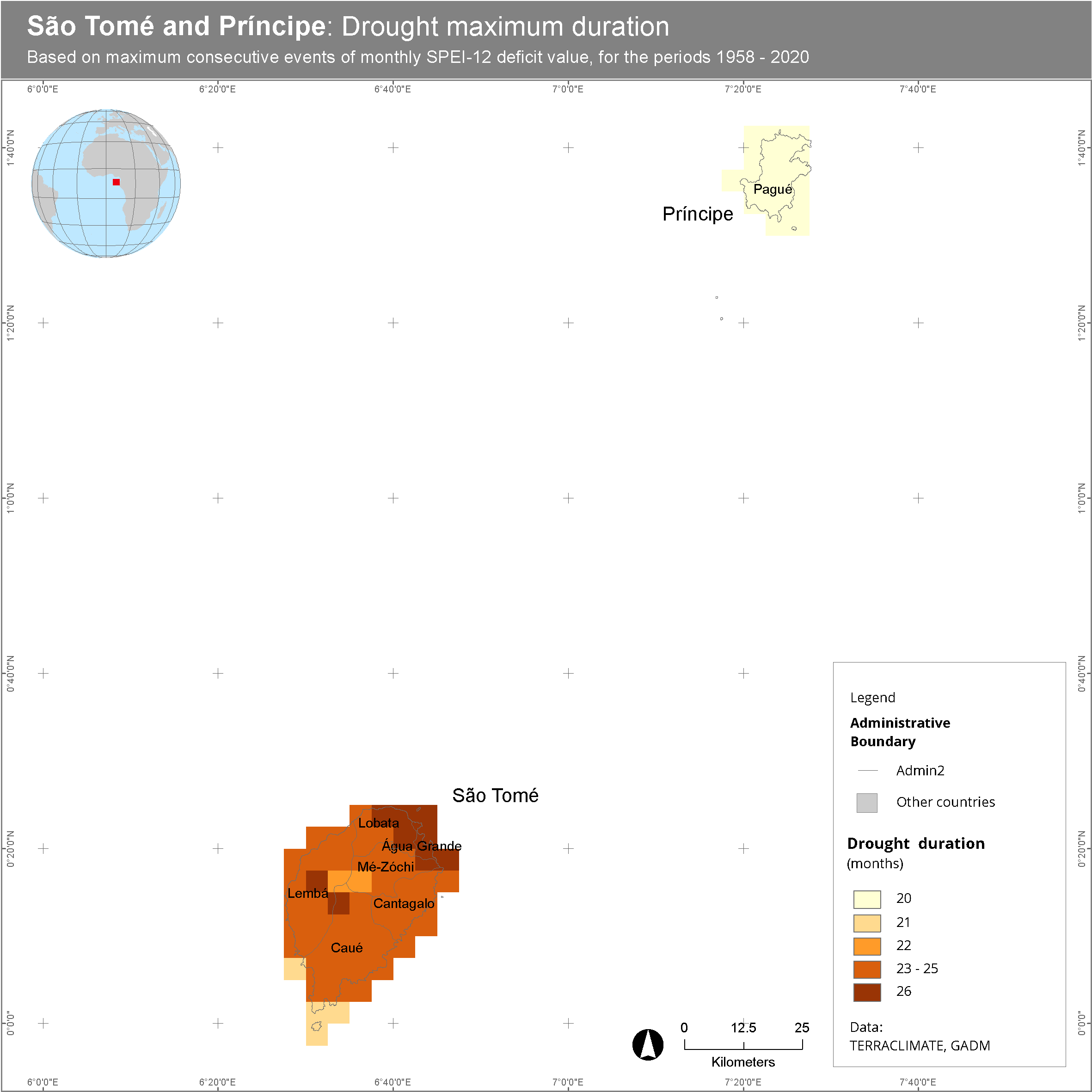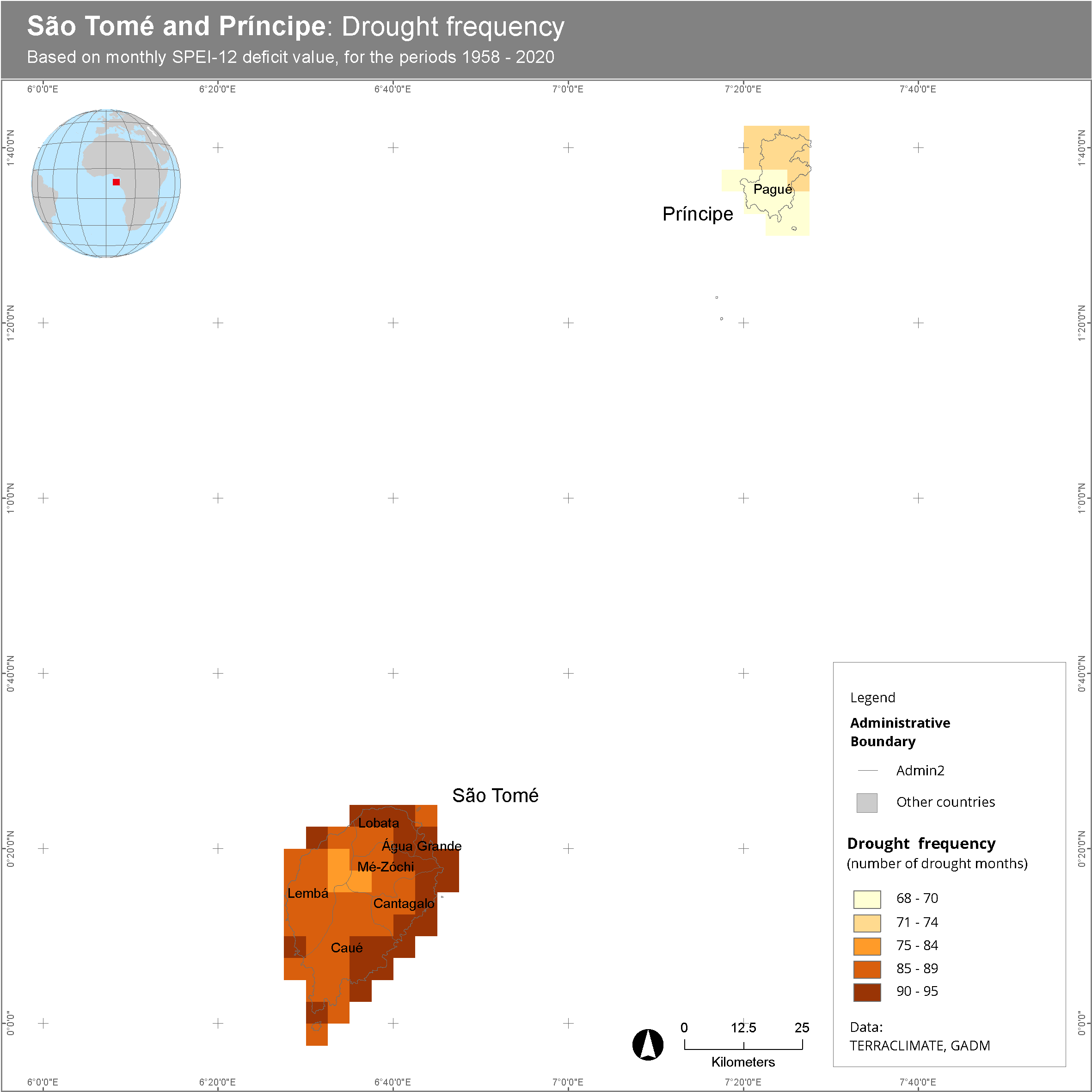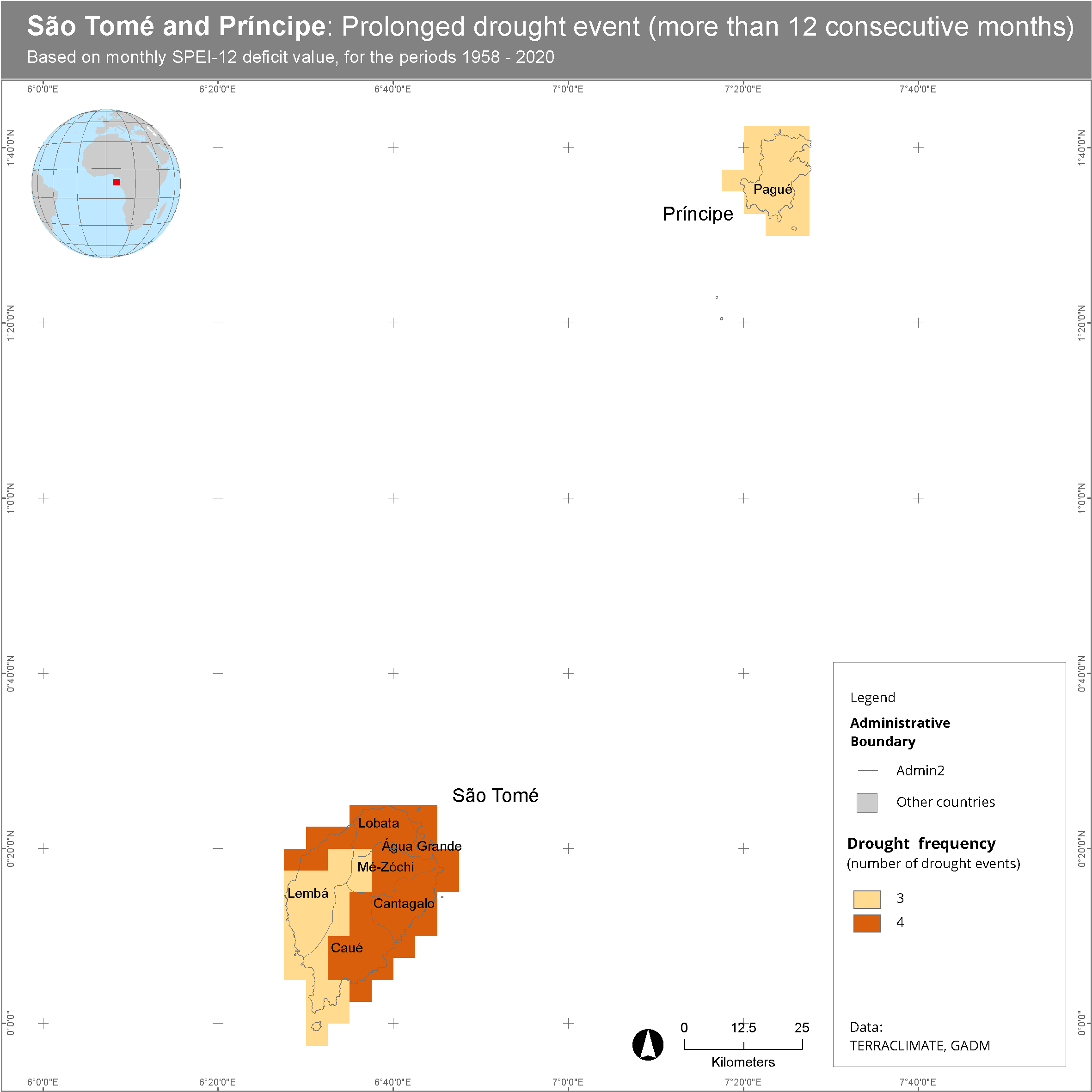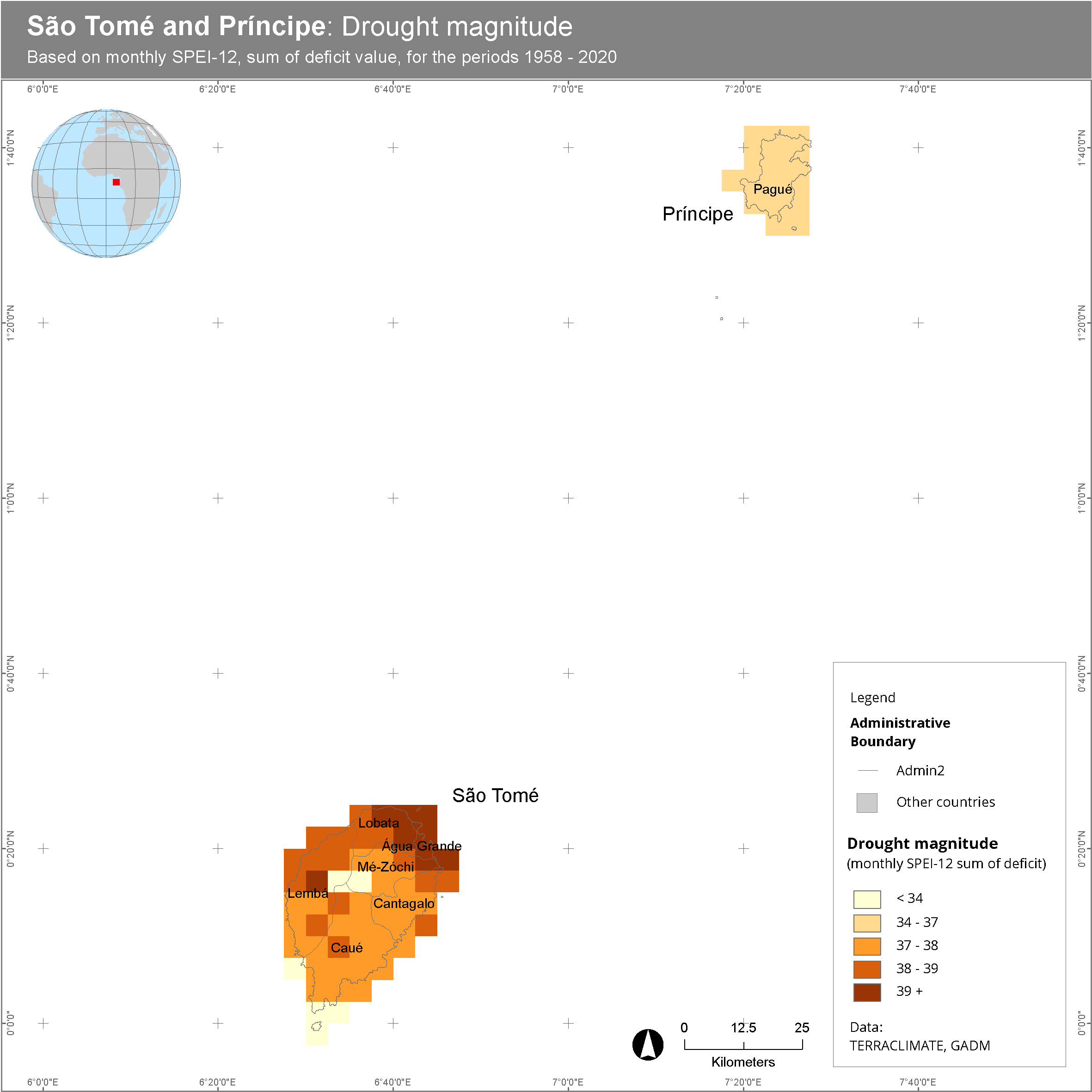Drought in São Tomé and Príncipe
Drought in São Tomé and Príncipe#
Project: R18 SUPPORT SOCIAL PROTECTION COVID-19 RESPONSE IN SAO TOME AND PRINCIPE (P176471).
The World Bank, through this task, will support the Government of Sao Tome and Principe to strengthen the adaptive social protection system in the country to be able to respond in an agile way to the long-term negative effects of COVID-19 and future shocks (natural, economic crisis and pandemics). This task complements the operational work done under the Social Protection and Skills Development Project in the COVID-19 response.
The team are utilizing SPEI-12 months based on TerraClimate global precipitation and potential evapotranspiration estimates data to monitor on how dry condition are evolving month by month and year by year. The SPEI-12 value less than -1.2 used to measure drought severity according to its intensity and duration, and identify the onset and end of drought episodes. The SPEI allows comparison of drought severity through time and space, since it can be calculated over a wide range of climates.
Picture below are some of the example, on how is the drought hazard, frequency and intensity in the past 60-years and how it is evolving month by month and year by year, well captured through the data.
Disclaimer
Country borders or names do not necessarily reflect the World Bank Group’s official position. This map is for illustrative purposes and does not imply the expression of any opinion on the part of the World Bank, concerning the legal status of any country or territory or concerning the delimitation of frontiers or boundaries.
Drought maximum duration, based on maximum consecutive events of monthly SPEI-12 deficit value.

Drought frequency, based on monthly SPEI-12 deficit value.

Prolonged drought event (more than 12 consecutive months), based on monthly SPEI-12 deficit value.

Drought hazard index, based on monthly SPEI-12, sum of deficit value and duration.

Drought intensity, based on monthly SPEI-12, sum of deficit value and duration.

Drought magnitude, based on monthly SPEI-12, sum of deficit value.

SPEI-12 average information for the country from 1960 - 2020.

